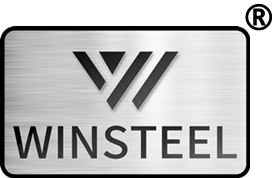In general, pure metals exhibit relatively high ductility. However, when other alloying elements are added, forming a single-phase solid solution also results in good ductility. For example, iron-nickel alloys can form continuous solid solutions, so the ductility of the alloy is high regardless of the proportion of iron to nickel.
However, under conditions where other elements are present, the formation of metal intermetallic compounds insoluble or partially soluble in solid solution reduces the ductility of the metal. Therefore, the ductility of the alloy is lower than that of pure metal or single-phase solid solution.
– Iron (Fe): It is the basic metal element of stainless steel.
– Chromium (Cr): It is the main element forming ferrite. Chromium combined with oxygen can generate a corrosion-resistant Cr2O3 passivation film, which is one of the basic elements for stainless steel to maintain corrosion resistance. An increase in chromium content can enhance the steel’s passivation film repairability. Generally, the chromium content in stainless steel must be above 12%.
– Carbon (C): It is a strong austenite-forming element that significantly improves the strength of steel. Additionally, carbon has adverse effects on corrosion resistance.
– Nickel (Ni): It is the main austenite-forming element that slows down the corrosion of steel and grain growth during heating.
– Molybdenum (Mo): It is a carbide-forming element. The carbides formed are extremely stable and can prevent grain growth during austenite heating, reducing the steel’s sensitivity to overheating. Additionally, molybdenum can make the passivation film denser and more robust, effectively improving stainless steel’s resistance to Cl- corrosion.
– Niobium (Nb) and Titanium (Ti): They are strong carbide-forming elements that enhance the steel’s resistance to intergranular corrosion. However, titanium carbide has adverse effects on the surface quality of stainless steel. Therefore, in stainless steel with high surface requirements, niobium is generally added to improve performance.
– Nitrogen (N): It is a strong austenite-forming element that significantly improves the strength of steel. However, it has a significant impact on the sensitization cracking of stainless steel. Therefore, nitrogen content must be strictly controlled in stainless steel for stamping purposes.
– Phosphorus (P) and Sulfur (S): They are harmful elements in stainless steel, adversely affecting both corrosion resistance and stamping performance.

